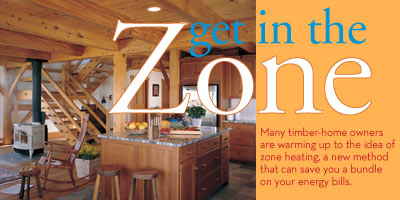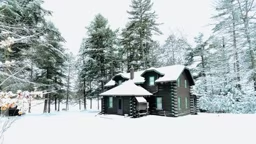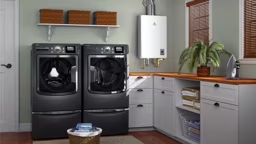 You’d never in a million years start a bonfire in your guest bedroom and stoke it with a wad of hundred-dollar bills. That’s just crazy—not to mention wasteful. But if you’re heating your home with a traditional HVAC system, that’s exactly what you’re doing, in a way. How to avoid this waste of energy and money? Try zone heating. “Zone heating is heating the rooms that are lived in most, such as the family room or kitchen,” says Leslie Wheeler of the Hearth, Patio & Barbecue Association (HPBA). “Rooms that are rarely used, such as a guest room, can be cooler than the rest of the home.” It’s a simple concept, really. Just install an extra heat source in these high-traffic areas. Then set your thermostat at a lower level, and let this heat source supply most of the warmth for your home. The best part? How much money you’ll save. If this combo of warm rooms and lower heating bills has piqued your interest, you have plenty of options to choose from. The system you choose will depend on a lot of variables, such as the size of the room you want to heat, the availability of the particular “fuel” for the heating source and the style you want to add to the room’s decor. Gas Hearths Gas fireplaces typically hook up to your home’s natural gas line or propane tank, which feeds burners in the unit to create what looks like a wood fire. Heat is distributed throughout the room by a built-in fan. PROS: Extremely efficient; variety of models and styles to choose from CONS: Cost of natural gas and propane is increasing; lacks the look and feel of a real wood fire Wood Burners Wood inserts and wood-burning stoves use the same fan technology that’s incorporated into gas fireplaces to distribute heat throughout a room. But instead of distributing gas heat, it’s the heat from a contained, airtight wood fire. PROS: Can’t beat the charm of crackling flames; fuel is cheap; easy to convert wood-burning fireplace into a zone heater with a wood insert CONS: Not as efficient as similar gas models; higher maintenance (requires regular cleaning of stove and chimney, removal of ashes, lifting of logs) and messier Pellet Stoves Much like the other zone-heating options, pellet stoves are available in a variety of styles and sizes, and the technology involved is surprisingly sophisticated. The stoves feature fans, but many have automatic starters and pellet feeders to keep you warm all day and night. PROS: Pellets burn more cleanly and efficiently than wood; very little smoke; can sometimes burn other biomass, such as dried corn (check with your dealer before substituting fuel, though); only have to re-fuel once a day CONS: Requires electricity to run parts (fan, controls, pellet feeder), so need a back-up power supply; no look and feel of a wood fire; mechanical parts are more prone to failure than gas or wood stove if not maintained properly Radiant Heating Radiant heating systems deliver heat to your home through a series of coiled tubes that circulate either electricity or hot water, with temperature controls that vary from zone to zone. Radiant heating systems typically are employed only on the first floors of homes, where the coiled water tubes can be embedded in concrete. PROS: Energy efficient; improved air quality; even heat; quiet operation; flexible room layout (no air vents or bulky appliances to take up space); lower thermostat settings increase boiler life CONS: Up-front cost is high; can lose heat into the ground without sufficient insulation |
Get in the Zone | What Is Zone Heating?
Many timber-home owners are warming up to the idea of zone heating, a new method that can save you a bundle on your energy bills.







_11868_2023-04-27_10-18-256x288.avif)



